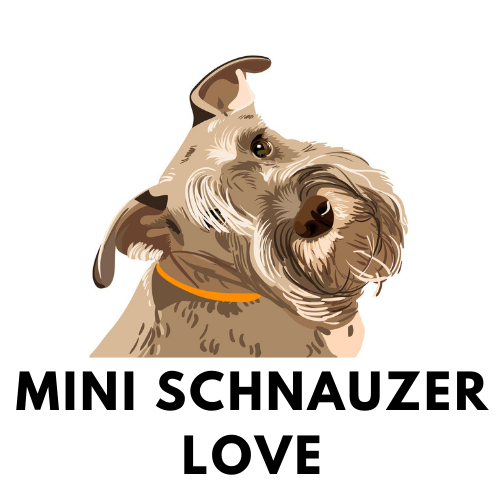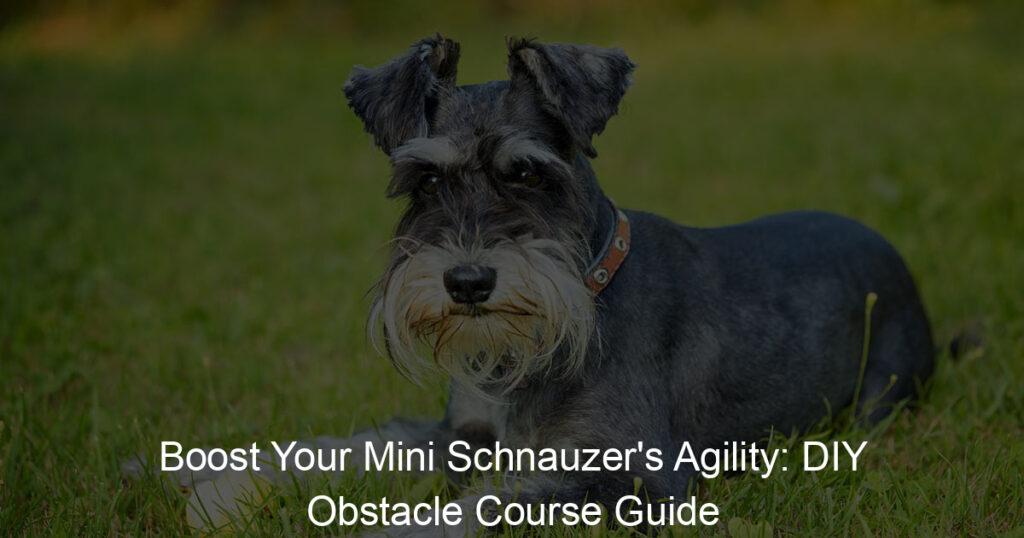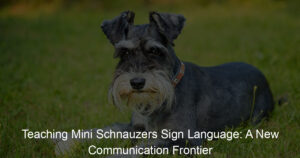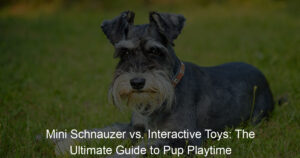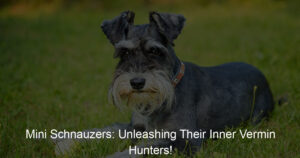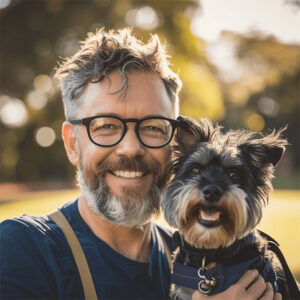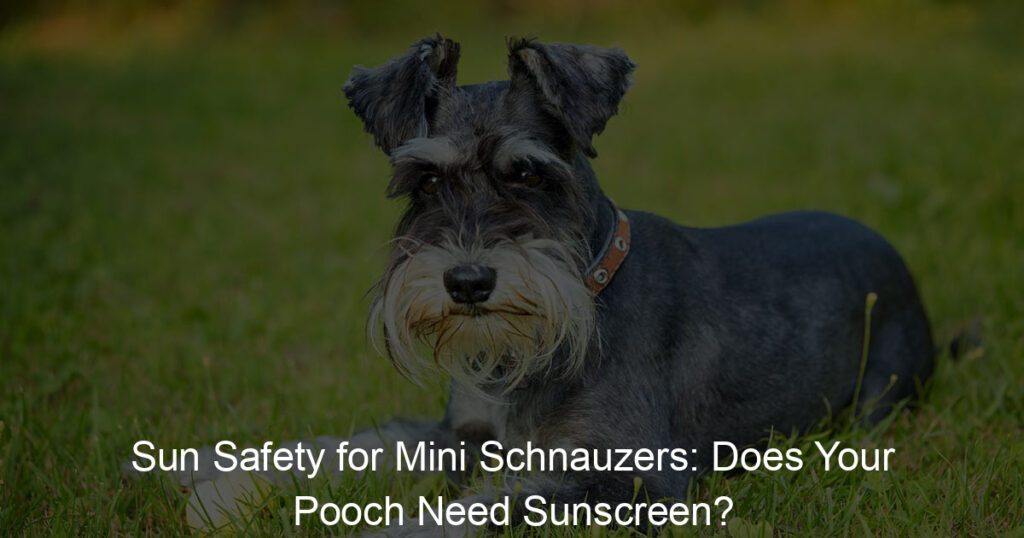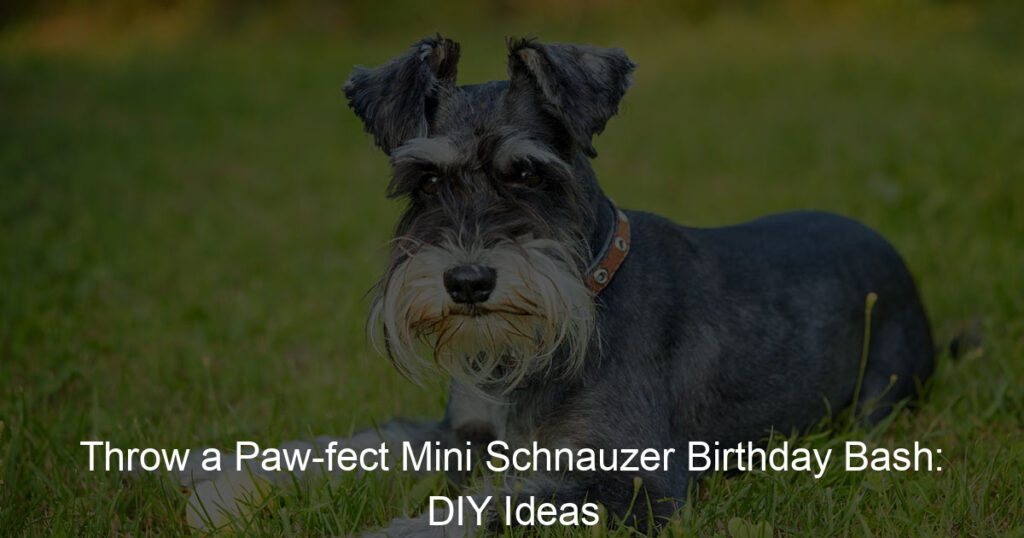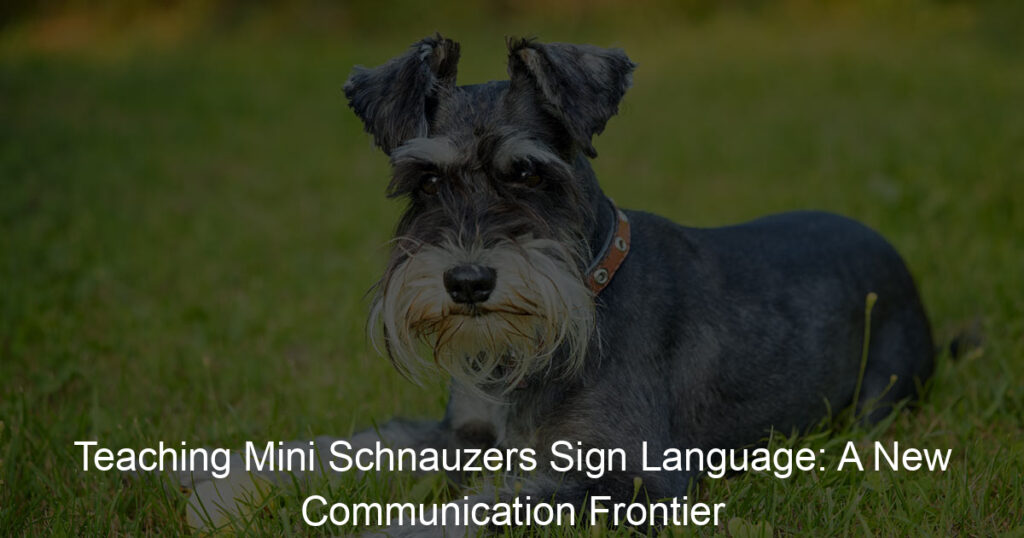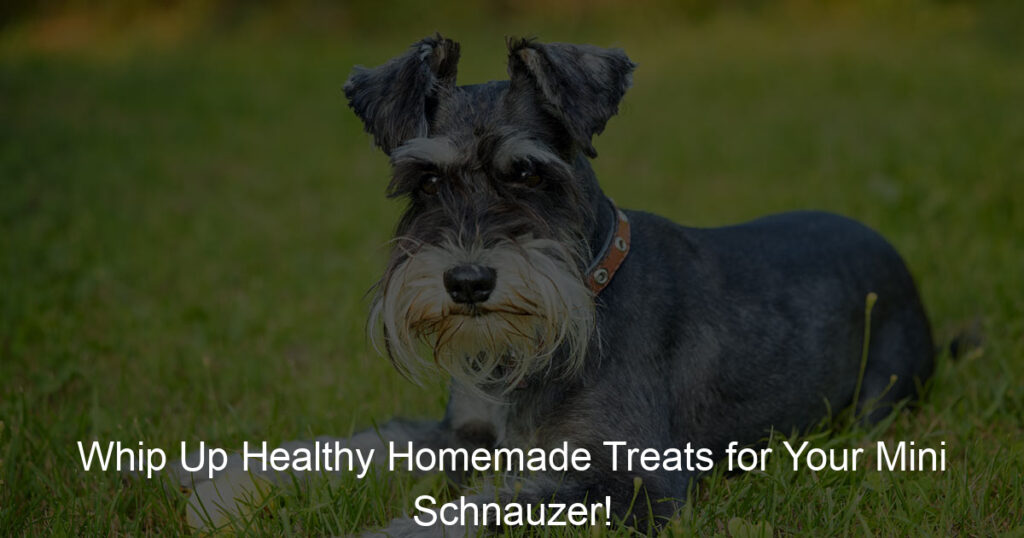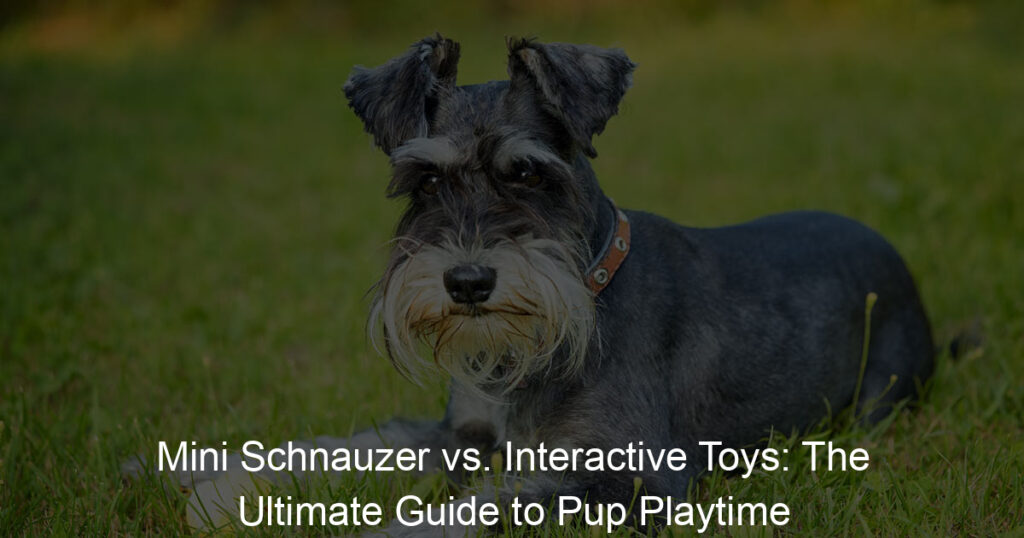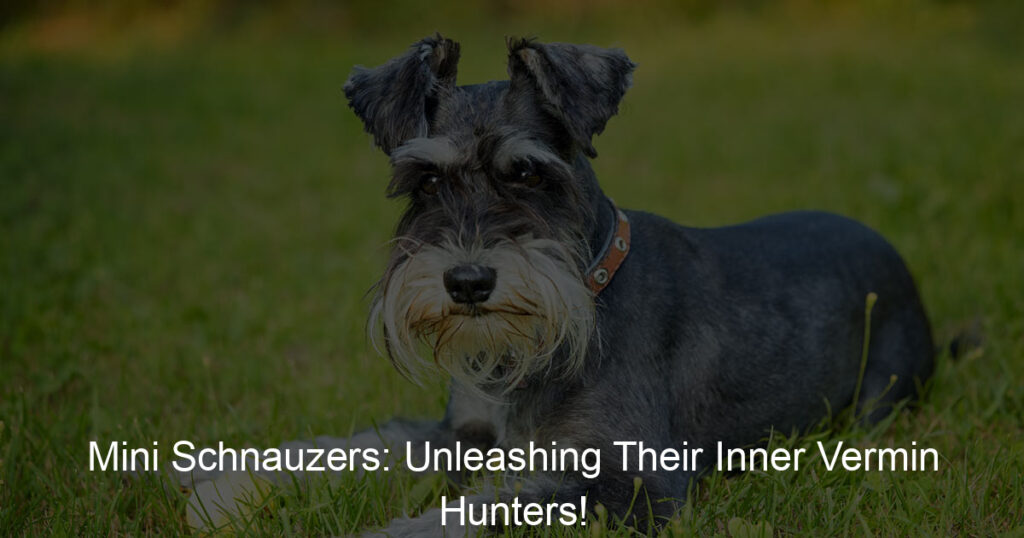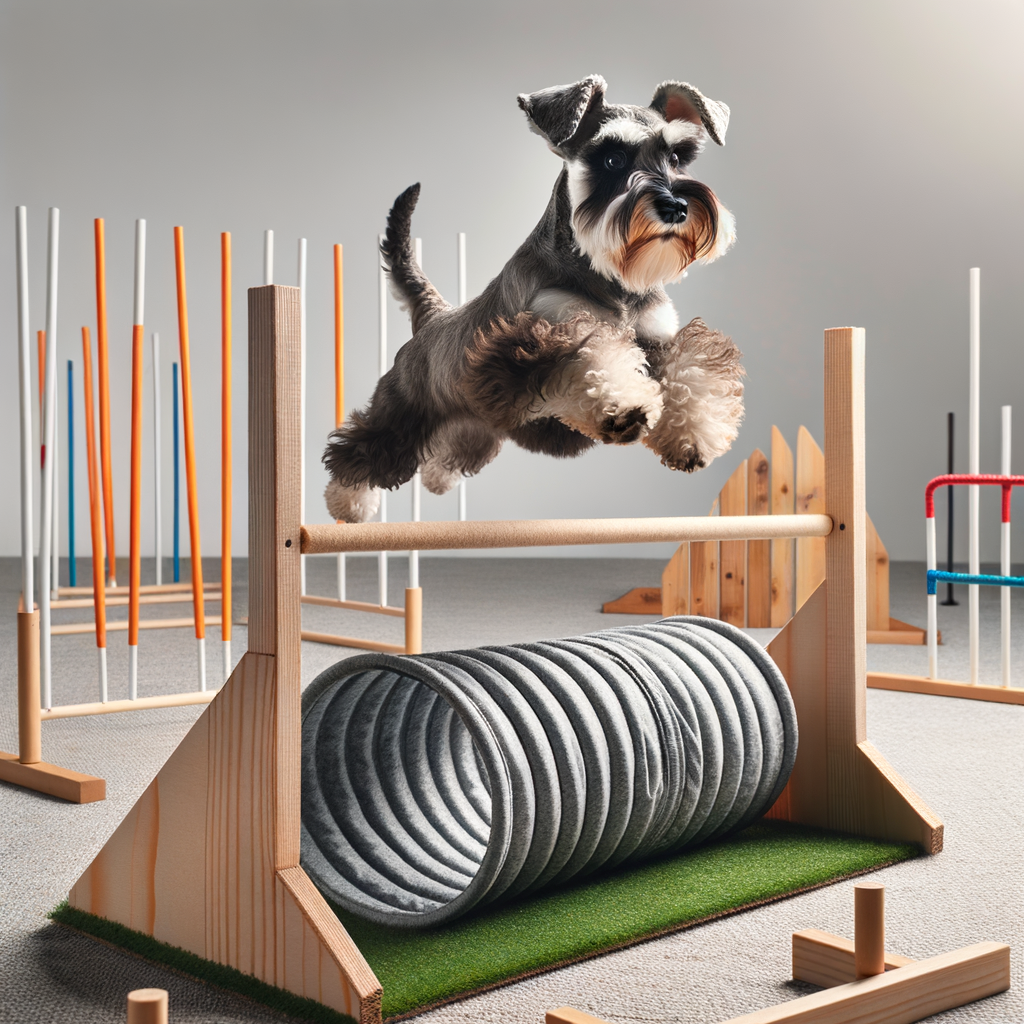
Introduction to Mini Schnauzer Agility Training
Agility training is a fun and effective way to keep your Mini Schnauzer active, healthy, and mentally stimulated. This sport involves guiding your dog through an obstacle course, which can include jumps, tunnels, and weave poles. Not only does this provide a great source of exercise, but it also strengthens the bond between you and your pet. In this section, we will explore the importance of agility training for Mini Schnauzers and the benefits of DIY pet training.
- Understanding the Importance of Agility Training for Mini Schnauzers
- Benefits of DIY Pet Training
Agility training is particularly beneficial for Mini Schnauzers due to their high energy levels and intelligent nature. This breed is known for its agility and speed, making them perfect candidates for this type of training. Agility training helps to channel their energy in a positive way, reducing the chances of destructive behavior. It also provides mental stimulation, which is crucial for this intelligent breed. The training can help improve their obedience and focus, making them easier to manage in everyday situations.
DIY pet training has numerous benefits. Firstly, it allows you to bond with your pet, strengthening the relationship between you. It also gives you the flexibility to tailor the training to your pet’s specific needs and abilities. DIY training can be a cost-effective alternative to professional training classes, as you can use household items to create your own obstacle course. Furthermore, it allows you to train your pet at your own pace, ensuring they are comfortable and confident with each new challenge.
In the following sections, we will delve into how to get started with DIY dog obstacle course, how to build your own course, techniques and tips for Mini Schnauzer agility training, and how to maintain your DIY dog obstacle course. Stay tuned to learn more about this exciting and rewarding activity!
DIY Dog Obstacle Course: Getting Started
Creating a DIY dog obstacle course can be an exciting project. Not only will it provide your Mini Schnauzer with a fun way to exercise, but it also offers a great opportunity for you to bond with your furry friend. Let’s get started by looking at the materials you will need to create your homemade dog agility equipment.
Materials Needed for Homemade Dog Agility Equipment
Building a dog agility course may seem like a daunting task, but with the right materials, it can be a breeze. Here’s a list of the essential items you will need:
- PVC Pipes: These are lightweight, easy to work with, and perfect for creating the frame of your obstacles.
- Connectors: These will be used to join the PVC pipes together. You’ll need a variety of T-joints, elbow joints, and straight connectors.
- Pool Noodles: These can be used to create safe and colorful jumps.
- Tunnel: You can purchase a children’s play tunnel or a specific dog agility tunnel.
- Stakes: These will be used to secure your obstacles to the ground.
- Measuring Tape: This will ensure your obstacles are the right size for your Mini Schnauzer.
- Marker: To mark the pipes where they need to be cut or joined.
- Saw: To cut the PVC pipes to the correct length.
Now, let’s talk about where to find these materials.
Where to Find Affordable Materials
Building your dog agility course doesn’t have to break the bank. Here are some places where you can find affordable materials:
- Hardware Stores: Stores like Home Depot or Lowe’s will have PVC pipes, connectors, and other tools you need.
- Dollar Stores: You can find pool noodles and possibly play tunnels at a dollar store.
- Online Marketplaces: Websites like Amazon or eBay can be a great place to find dog agility tunnels and other specific items.
- Thrift Stores: Don’t underestimate the potential of thrift stores. You might find play tunnels or other useful items at a fraction of the cost.
Remember, the goal is to create a fun and safe environment for your Mini Schnauzer to exercise and train. With these materials and a bit of creativity, you’ll have your DIY dog obstacle course up and running in no time.
Designing Your Dog Agility Course
Designing a dog agility course requires a good understanding of the basics and a keen eye for what will work best for your Mini Schnauzer. Let’s explore these two important aspects.
- Understanding Dog Agility Course Design Basics
- Creating a Schnauzer-friendly course
Designing a dog agility course is like setting up a playground for your pet. It’s all about creating a space where your dog can run, jump, and navigate through various obstacles. The key elements of a dog agility course include jumps, tunnels, weave poles, and pause tables.
Each of these elements tests different skills. Jumps and tunnels test your dog’s speed and agility. Weave poles test their precision and focus. Pause tables test their obedience and control.
When designing your course, it’s important to consider the size and layout of your space. You want to create a course that is challenging, but also safe and fun for your dog. Remember, the goal is not just to test your dog’s skills, but also to provide them with a fun and engaging form of exercise.
When designing a course specifically for a Mini Schnauzer, there are a few additional factors to consider. Mini Schnauzers are small, energetic dogs with a lot of agility. They are also very intelligent and love to be challenged.
Therefore, your course should include elements that test both their physical agility and their mental acuity. For example, you might include a series of small jumps, followed by a tunnel, and then a set of weave poles. This will test their speed, agility, and focus all in one go.
It’s also important to consider the height of your obstacles. Mini Schnauzers are small dogs, so your jumps should not be too high. A good rule of thumb is to set your jumps at a height that is equal to your dog’s shoulder height.
Finally, remember to make your course fun! Mini Schnauzers love to play and explore, so include elements that will keep them engaged and excited. This could be a tunnel made from a fun fabric, or a set of weave poles with colorful flags.
In conclusion, designing a dog agility course is a fun and rewarding project that can provide your Mini Schnauzer with hours of entertainment and exercise. By understanding the basics and tailoring your course to your dog’s specific needs, you can create a course that is both challenging and fun.
Building Your DIY Dog Obstacle Course
Building a DIY dog obstacle course for your Mini Schnauzer can be a fun and rewarding experience. Not only does it provide a great form of exercise for your furry friend, but it also helps to strengthen your bond. Here’s a step-by-step guide to help you get started.
Step-by-Step Guide to Building Your Course
Creating a DIY dog obstacle course may seem daunting at first, but with a little planning and creativity, you can create a fun and safe environment for your Mini Schnauzer to play and exercise.
- Step 1: Setting up the Course
- Step 2: Building Individual Obstacles
- Step 3: Safety Checks
The first step in building your DIY dog obstacle course is to determine where you’ll set it up. You’ll need a flat, open space that’s free of any potential hazards, like sharp objects or toxic plants. A backyard or a large indoor space would be ideal. Make sure the area is large enough for your Mini Schnauzer to run and jump without any restrictions.
Once you’ve chosen the perfect spot, it’s time to start building the individual obstacles. You can use everyday items like boxes, hula hoops, and cones to create a variety of challenges. For example, you can set up a row of boxes for your Mini Schnauzer to jump over, or a hula hoop for them to jump through. Remember, the goal is to make the course fun and challenging, but not too difficult that it discourages your dog.
After you’ve set up all the obstacles, it’s important to conduct a thorough safety check. Make sure all the obstacles are secure and won’t tip over or collapse. Check the area for any potential hazards, like sharp edges or small objects that your Mini Schnauzer could swallow. It’s also a good idea to walk your dog through the course a few times to make sure they’re comfortable with all the obstacles.
Building a DIY dog obstacle course is a fun and rewarding project that you and your Mini Schnauzer can enjoy together. With a little planning and creativity, you can create a course that’s both challenging and safe for your furry friend.
Tips for a Successful Build
Building a DIY dog obstacle course for your Mini Schnauzer can be a rewarding experience. However, it’s important to be aware of common pitfalls and ensure the course is both safe and fun for your furry friend. Here are some tips to help you succeed:
-
Common pitfalls and how to avoid them
One common mistake is not considering your dog’s size and abilities when designing the course. Remember, a Mini Schnauzer is a small breed, so the obstacles should be appropriately sized. Also, avoid using materials that could potentially harm your dog, such as sharp edges or toxic paints.
Another pitfall is not securing the obstacles properly. This could lead to accidents if an obstacle topples over when your dog is using it. To avoid this, make sure each obstacle is stable and secure before letting your dog use it.
-
Ensuring the course is safe and fun for your Mini Schnauzer
Safety should be your top priority when building a DIY dog obstacle course. Check all materials for sharp edges or small parts that could be swallowed. Also, consider your dog’s fitness level and don’t make the course too challenging.
To make the course fun, incorporate elements that your Mini Schnauzer enjoys. For example, if your dog loves to jump, include several jumping obstacles. If your dog enjoys tunnels, make sure to include one in your course. Remember, the goal is to provide physical exercise and mental stimulation for your dog, so keep it fun and engaging!
| Considerations | Recommendations |
|---|---|
| Size and Abilities of your Mini Schnauzer | Design the course with appropriately sized obstacles. |
| Safety | Check all materials for sharp edges or small parts. Ensure all obstacles are stable and secure. |
| Fun Factor | Incorporate elements that your Mini Schnauzer enjoys. Keep the course fun and engaging! |
Mini Schnauzer Agility Training: Techniques and Tips
Training your Mini Schnauzer for agility courses can be a rewarding experience for both you and your pet. It not only provides physical exercise but also stimulates their mind. A key aspect of this training involves enhancing your dog’s coordination. Let’s explore some techniques and tips to help you with this.
Enhancing Dog Coordination
Coordination is a crucial skill for your Mini Schnauzer to master, especially when it comes to agility training. It involves the ability to move and react quickly, which is essential for navigating through agility courses. Here are some exercises and ways to incorporate them into your training routine.
- Exercises for improving your Mini Schnauzer’s coordination:
- How to incorporate these exercises into the agility course:
1. Balance Beam: A simple balance beam can be a great tool to improve your dog’s balance and coordination. Start with a low beam and gradually increase the height as your dog gets more comfortable.
2. Weave Poles: Weave poles can help improve your dog’s agility and precision. Start with wider gaps and gradually decrease the space as your dog improves.
3. Tunnel Run: Running through a tunnel can help your dog learn to navigate in confined spaces, improving their coordination and agility.
1. Start Slow: Begin with simple exercises and gradually introduce more complex ones as your dog gets more comfortable.
2. Consistency is Key: Consistency is crucial in training. Make sure to incorporate these exercises into your daily training routine.
3. Positive Reinforcement: Always reward your dog for their efforts. This will motivate them to perform better.
Remember, every dog learns at their own pace. Be patient and consistent, and soon you’ll see your Mini Schnauzer navigating the agility course with ease and confidence.
Miniature Schnauzer Training Tips
Training your Miniature Schnauzer can be a fun and rewarding experience for both you and your furry friend. Here are a couple of tips to help you make the most out of your training sessions.
- Tip 1: Keeping training sessions fun and engaging
- Tip 2: Reward-based training techniques
Training doesn’t have to be a chore. In fact, it should be a fun and engaging activity that both you and your Miniature Schnauzer look forward to. Try to incorporate games into your training sessions. For example, you could set up an obstacle course in your backyard and guide your Schnauzer through it. This not only helps them learn new commands, but also improves their agility and coordination.
Positive reinforcement is key when it comes to training your Miniature Schnauzer. This breed responds well to reward-based training techniques. Whenever your Schnauzer successfully performs a command, be sure to reward them with a treat or a pat on the head. This will motivate them to continue doing well. Remember, patience and consistency are key in this process.
By following these tips, you can ensure that your Miniature Schnauzer’s training sessions are not only effective, but also enjoyable. Happy training!
Maintaining Your DIY Dog Obstacle Course
Once you’ve built your DIY dog obstacle course, it’s important to keep it in top shape. This not only ensures the safety of your Mini Schnauzer but also enhances the effectiveness of the agility training. Here are two key aspects to consider:
- Regular maintenance checks
Regular maintenance checks are crucial for the longevity of your DIY dog obstacle course. These checks help identify any potential hazards that could harm your Mini Schnauzer during training.
Start by inspecting each obstacle for any signs of wear and tear. Look for loose screws, splintered wood, or torn fabric. If you find any, fix them immediately. Also, ensure the course is clean. Remove any debris, such as leaves or sticks, that could cause your dog to trip or slip.
It’s recommended to conduct these checks at least once a week. However, if your dog uses the course frequently, you might need to do it more often.
- Updating and modifying your course
As your Mini Schnauzer progresses in agility training, you might need to update and modify your course. This keeps the training challenging and engaging for your dog.
Consider changing the order of the obstacles or introducing new ones. For instance, if your dog has mastered the jump over the hurdle, you could add a tunnel or a weave pole. Remember to adjust the difficulty level of the course to match your dog’s skill level.
Updating your course not only stimulates your dog’s mind but also helps develop new skills. However, make sure any changes you make are safe for your Mini Schnauzer.
In conclusion, maintaining your DIY dog obstacle course involves regular checks and updates. By doing so, you can ensure a safe and effective training environment for your Mini Schnauzer.
Conclusion: The Benefits of Mini Schnauzer Exercise
As we reach the end of this informative journey, it’s essential to recap the numerous benefits that agility training brings to your Mini Schnauzer. Not only does it provide physical exercise, but it also stimulates their mental faculties, making them more alert and responsive.
- Recap of the benefits of agility training for Mini Schnauzers: Agility training is a fantastic way to keep your Mini Schnauzer fit and healthy. It helps to improve their coordination, increases their flexibility, and strengthens their muscles. Moreover, it also enhances their mental stimulation, as they have to think and make decisions quickly. This training also fosters a stronger bond between you and your pet, as you work together to navigate the course.
- Encouragement for continued training and course building: Building and maintaining your DIY dog obstacle course is not a one-time task. It requires continuous effort and improvement. As your Mini Schnauzer masters one level, challenge them with a more complex one. This will keep them interested and eager to learn more.
According to a study, dogs that engage in regular agility training are found to be more active, healthier, and happier. They are also less likely to develop behavioral issues, as the training keeps them mentally stimulated and physically tired, leaving no room for destructive behavior.
Remember, the goal is not to make your Mini Schnauzer the fastest or the most agile, but to ensure they are healthy, happy, and mentally stimulated. So, keep the training sessions fun, rewarding, and stress-free. Celebrate each small victory and continue to build on their skills.
In conclusion, agility training is a wonderful activity that benefits both you and your Mini Schnauzer. It’s a fun, engaging way to spend quality time with your pet while also ensuring they are physically fit and mentally stimulated. So, keep up the good work, and continue to explore new ways to make the training sessions more exciting and challenging for your Mini Schnauzer.
